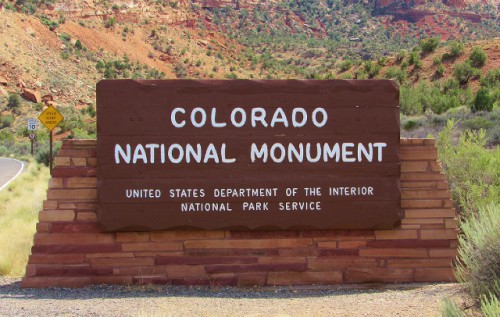In my last point – I shared our experience driving the Trail Ridge Road up to the Alpine Visitor’s Center. Now, we hustled back down the hill from our hike above the Visitor’s Center to some big, fat raindrops, but fortunately the skies didn’t really open up. Back in the car, we made our way down from the higher elevations, passing by the Continental Divide (we didn’t stop because we couldn’t find a parking space at the viewpoint).
We did stop at the Holzwarth Historic Site. It marks the site of a homestead and later tourist holiday and dude ranch located in the Kawuneechee Valley along the Colorado River.

Holzwarth Historic Site
It was operated by John and Sophie Holzwarth, who came to the area in 1917 after prohibition was a major setback for John – he was a saloonkeeper. The family decided to try their hand at subsistence ranching. The ranch never really took off, but in the 1920s, the ranch opened to tourists, who could stay there for $2 per day or $11 per week. For that price, you received 2 meals per day – Sophie Holzwarth was said to be an amazing cook – and lodging in a rustic cabin.
We walked about ½ mile through an open field to the site, crossing a Colorado River that is still more of a mountain stream so close to its headwaters. The clouds above were continuing to look ominous, and we felt more of those big, fat raindrops. We arrived at the site just in time to beat the rain and catch a tour of the main cabin, called Mama House.

The Living Room of Mama House, at the Holzwarth Historic Site
Inside Mama House, the walls were covered in deer heads! And deer hoof decorations. John Holzwarth dabbled in taxidermy (he was actually really good at it) because people who stayed at the ranch often went hunting and wanted their trophies mounted. Mr. Holzwarth was kind enough, or foolish enough, to not require clients to prepay for their taxidermy, which of course led to a lot of people not coming back to pick up their dead things! So, he displayed them in his own home! Yuck…

Deer Heads at Mama House
John and Sophie also distilled their own liquor in a homemade still – a big draw for their guests. Apparently they were busted once during Prohibition, but the feds really had bigger fish to fry, so they were mostly left alone. At the end of the tour, the kids had an opportunity to try on a bearskin coat (like in Legends of the Fall!). I couldn’t resist – after the kids cleared out I tried on the bearskin coat myself – it was really heavy and really warm!

Me, wearing a Bear Coat
We also checked out several of the other buildings onsite, there were several small cabins for the people staying at the ranch, the icehouse, and the taxidermy shop. They were all pretty cool.

One of the small cabins at the Holzwarth Historic Site
The rain was really coming down at that point, and I was standing outside a cabin, under the eave, wondering if the rain would stop and chatting with the Ranger. He explained that if lightning and thunder began, we could get a ride back to the parking lot. Three people have been killed by lightning this year in Rocky Mountain National Park, so they aren’t messing around. If there is lightning in the area, they don’t want you walking through a field being the tallest thing out there, because then you are a target!
A few minutes later, we got to ride in an official National Park Service vehicle, and I didn’t even have to get myself arrested!
Our next stop was impromptu – we saw cars parked along the highway and knew something was up. What we didn’t know was that the something was two moose! I saw moose! They were just off the side of the road, so we got a great view of them – it was awesome! I know this is a lot of exclamation points, but it was so cool to see moose in the wild! The moose were just relaxing quietly near the river, one was lying down and the other was standing. I think the one lying down was a yearling, still hanging out with its mother.

One Moose

Two Moose!
After a short time watching the moose, we got back in the car to get on our way, just as the rain was catching up with us again… This time we were in for a long evening drive to our destination for the night – Grand Junction, Colorado. We arrived after dark, after a long drive through road construction, alongside beautiful rivers, and past turnoffs for resort towns like Vail, and I saw another marmot in the middle of the median of the freeway – very much alive!
What a day!
Total driving distance on Day 2: 258 miles – Estes Park – Rocky Mountain National Park – Grand Junction
Hotel for the night: Econo-Lodge, Grand Junction – clean and bright with large rooms!







































